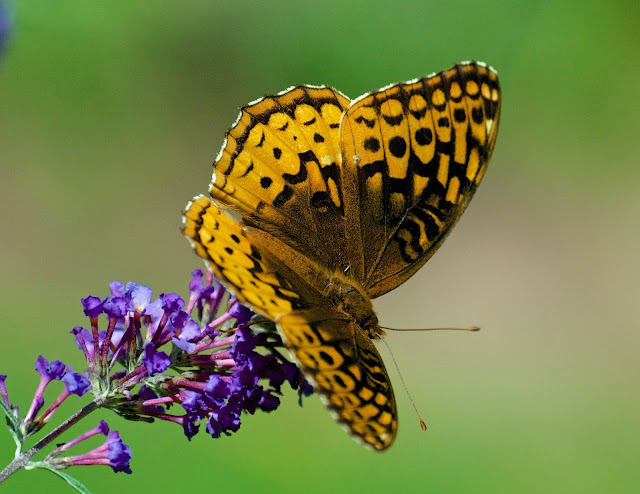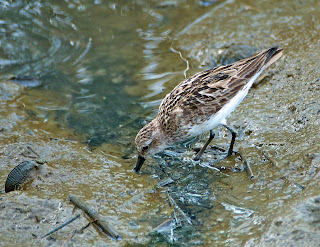Shorebird
migration
We spent two days at two
excellent habitats in search for migrating shorebirds. It’s the middle of August, and the
migration of these birds should be just about peaking. Last week, we spent some time in
Brigantine Unit of the Forsythe National Wildlife Refuge in Smithville, New
Jersey. Already, it seemed, many
of the migrants have moved through.
The Dunlin which were so profuse a couple of weeks ago were not to be
found and the Dowitchers seemed to be diminishing in numbers as well. Others, however, were here in the
northeast in big numbers.
Among those were the
Semi-palmated sandpipers which we found by the thousands as the Brig. This week, however, we visited two
other areas of note….. White’s Bogs, where last week we had the Scissor-tailed
flycatcher, and Jamaica Bay Wildlife Refuge.
 |
| White's Bogs, Pemberton, NJ |
At the bogs, we found a nice
number of Solitary sandpipers (not so solitary after all!), good numbers of
yellowlegs, and quite a few Short-billed dowitchers.
The other bird of note at the
bogs were the large numbers of Gull-billed terns flying about in large
flocks. It is often somewhat of an
arduous task to be able to locate these birds, but this week, they were the
default tern at White’s Bogs. The
birds exhibited a great deal of social behavior, working in concert as they
hunted the surface of the bog ponds.
What a beautiful sight to see the large numbers flying as if the entire
display was choreographed by an avian Twyla Tharpe.
We were hoping to
locate some Pectoral and Stilt sandpipers at this site, but our survey of the
property came up empty.
Later in the week, back in our
home state of New York, we checked out what has always been a hotspot for
finding migrant shorebirds, Jamaica Bay Wildlife Refuge. Last year’s “Superstorm Sandy”
devastated the refuge, breeching one of the dikes which isolated the West
Pond. There were far fewer birds
than we have come to expect at the refuge this week, and we could not help but
wonder what the future holds for the area. How long will it take, if ever, for the refuge to once again
become the magnet it had been before being ravaged by the storm.

Still, we found some fine
birds to hold our attention. Several
first year Black-crowned Night-herons were found including this one which was
either bathing or simply keeping cool on this warm day by spending and extended
period of time half submerged in “Big John’s Pond”. Being close to the photo blind made for an excellent
opportunity to shoot this youngster. A group of Glossy ibises were also visible from the
blind and remained perched above the Night-heron.
Short-billed dowitchers were also
common and were not afraid to come within great photo-op distance. These seen below happened to be feeding in the reflection of a mute swan, making for an interesting backdrop.
Oystercatchers were moving
through and we counted over thirty on one sandbar out in the bay.
The Stilt sandpiper we
had sought down in Jersey was finally found here in Jamaica Bay and gave us
nice extended looks as did a less common bird here in New York, the American
avocet.
 |
| Stilt sandpiper |
A far more common bird
(although not found in great numbers in the refuge today) is the Semi-palmated
plover. This bird gave us a great
show as it bathed no more than 30 yards from us in the shallows of the north
end of the East Pond. In an effort
to really shake that excess water off,
the bird made a vertical leap at one point and shook vigorously in mid-air. I had the camera trained on the bird at
the right time and captured the acrobatic move.
Well, it is August. And after a few weeks lull, things are
picking up once again as the first waves of fall migrants begin to move through
Southeast New York. We’ll keep an
eye on the continuing movement of the shorebirds as well as the “confusing fall
warblers” in the upcoming weeks.
Watch for upcoming reports on our finds.






























